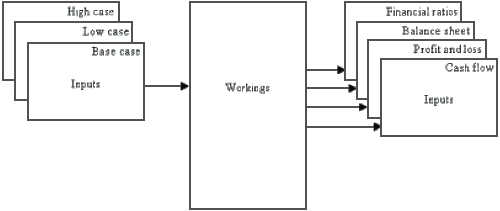Authors
David Colver
Abstract
Various techniques for developing spreadsheet models greatly improve the chance that the end result will not contain basic mechanical errors. However, for every discipline in which a given technique is useful, there is likely to be another in which the same technique works badly.
As a result, the author urges that EuSpRIG does not succumb to internal or external pressures to champion a particular set of "best practices", because no such set is optimal in all spreadsheet applications.
Sample

In general:
- We separate the inputs from the workings so that we can practice easy scenario management.
- We also separate the workings from the outputs to wage war on long formulae.
Separating the inputs, workings and outputs of a model has a nice, theoretical elegance to it, and it maps neatly on to how large scale data processing systems have worked for several decades.
But spreadsheet models aren't large data processing systems: they are decision tools that work on devices that are not called personal computers for nothing.
By separating the inputs, workings and outputs you cause some lines in the model to appear three times over, once in each place. For someone who is not a proficient modeller, experienced spreadsheet user or even a fast typist, that is quite an overhead.
Publication
2004, EuSpRIG
